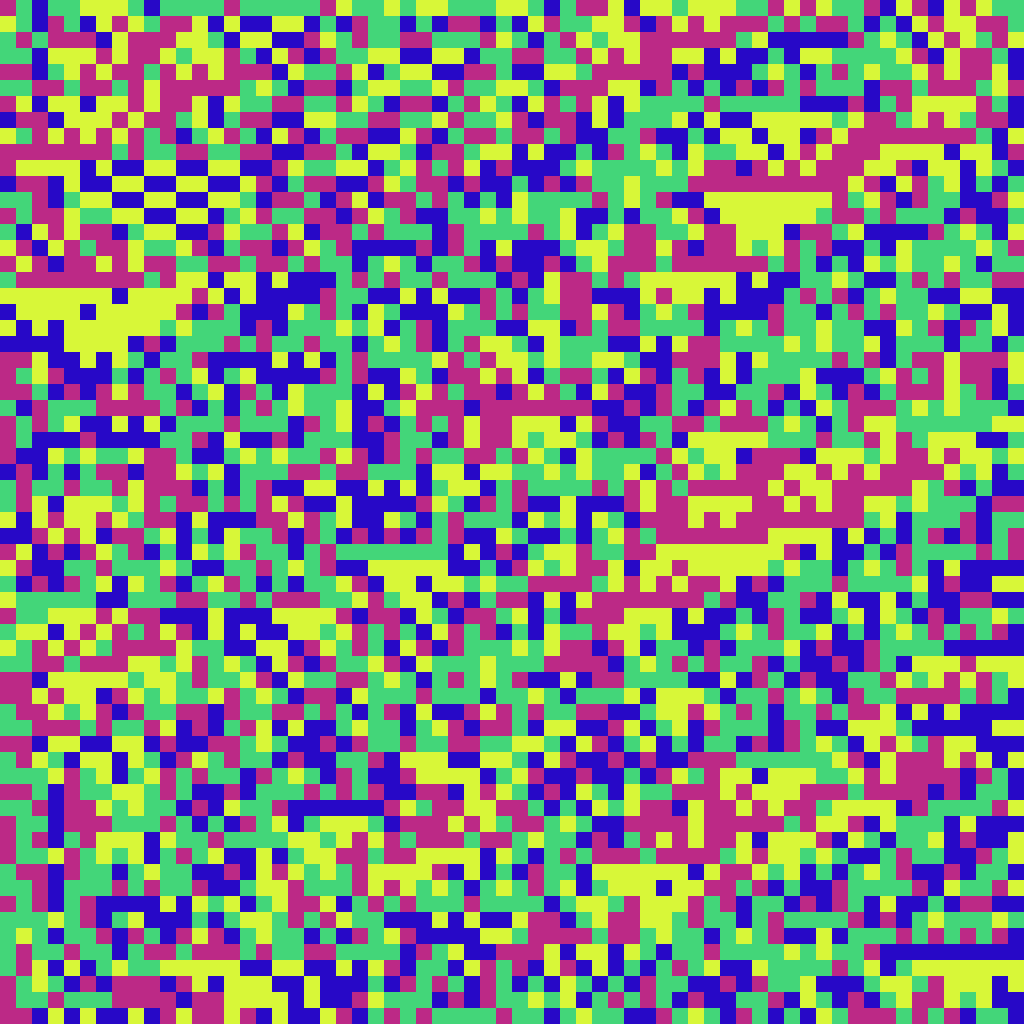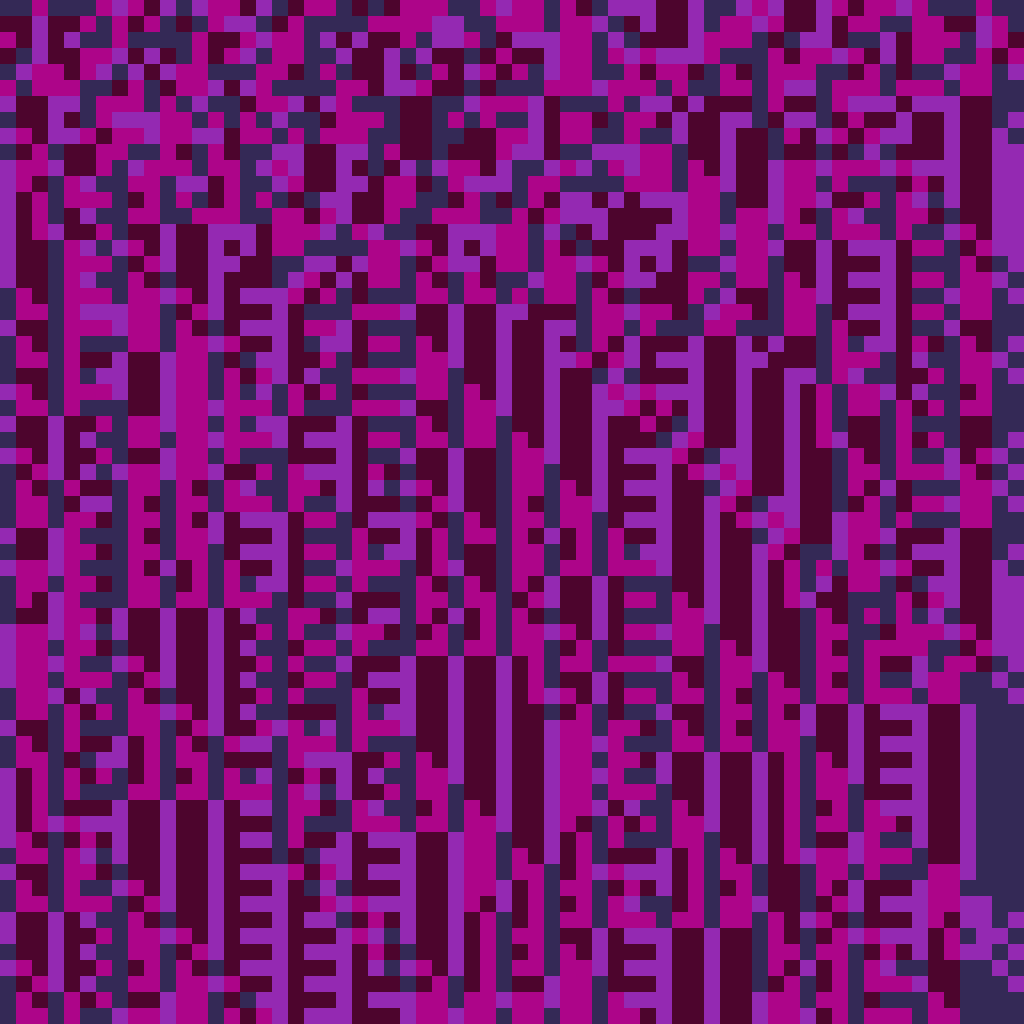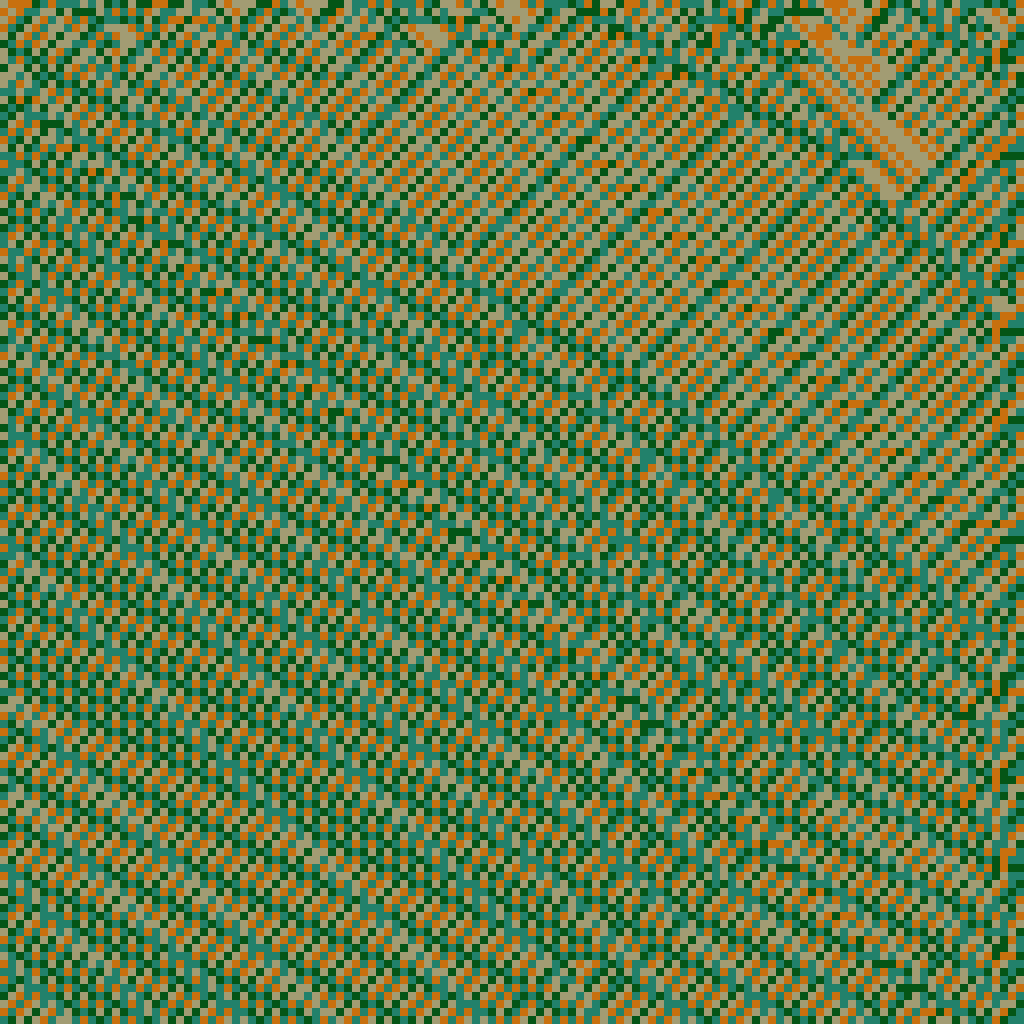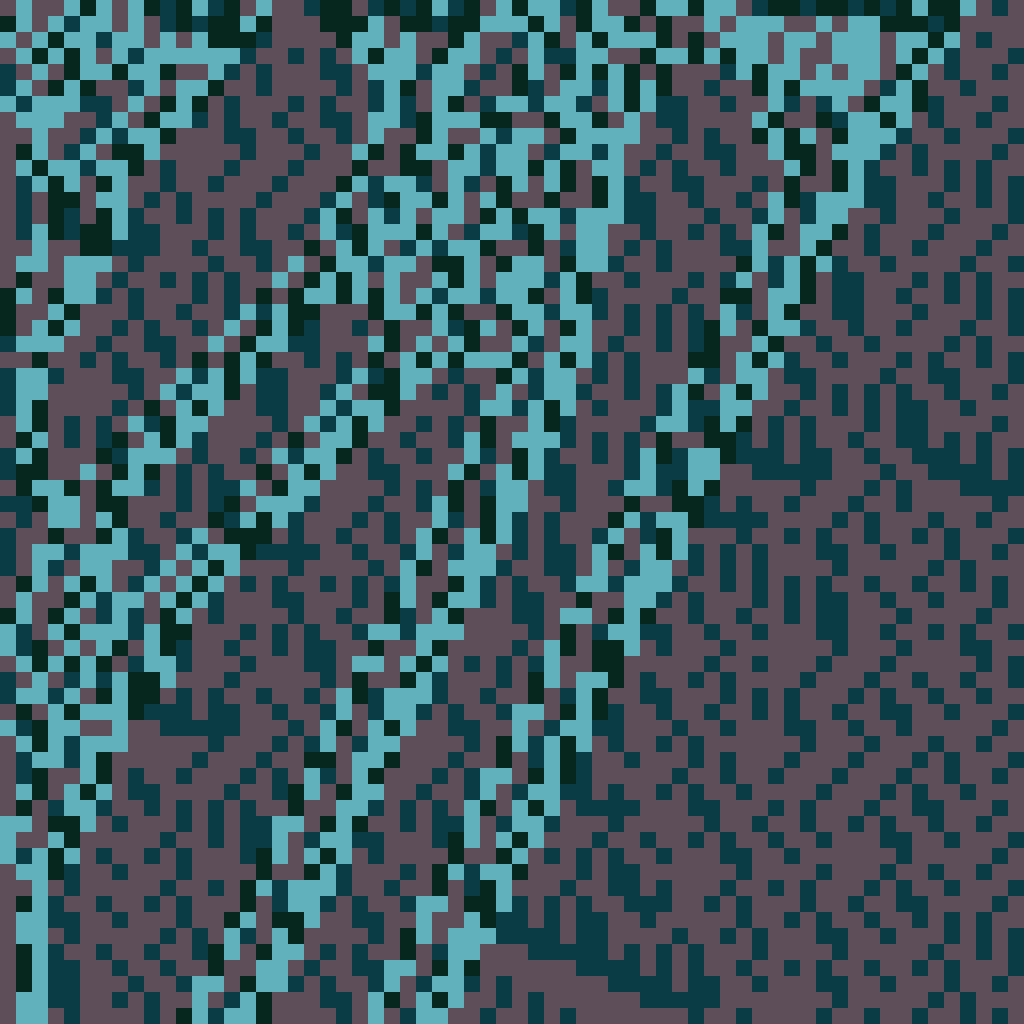by JohnWowkavic
Blending Neighbors Cellular Automata
IPFS

15 July 2022•TEZOS•IPFS
"Blending Neighbors Cellular Automata" is the third work in my experiments and studies with 1D cellular automata.
How it works: A ruleset is defined by 32 bits. To determine the next state of a cell, the cell looks at 5 fellow neighbor cells. It checks their bits and boops to decide what sort of cell it wants to be. This pattern continues endlessly (most cases) and is very fascinating to observe true lifelike random behavior in pixel form.
At the start, two different sets of rules are chosen. The first set of is from a pool of predefined values hand curated by myself. The second set of rules lie in the fate of the universe. This method is used for color as well. Layer 1 consists of 26 different colorways and Layer 2 chooses two colors completely at random.
Solving problems and asking new questions with your neighbors. Many cellular colors, patterns, and mysteries are eager to be created, discovered, and explored!
Resolution Rarity:
64 - Common
128 - Uncommon
101 - Rare
256 - Rare
32 - Very Rare
512 - Legendary
Bonus Features:
There is a chance that there is no blending
There is a chance that the top and bottom layer are swapped
There is a chance of no top layer
There is a chance of pixel blur
Right click - show/hide top layer
Left click - play/pause the automata
Additional credits to Wentian Li and Jason Rampe for discovering some of the rules used. I hope you enjoy the others found by myself as well.
How it works: A ruleset is defined by 32 bits. To determine the next state of a cell, the cell looks at 5 fellow neighbor cells. It checks their bits and boops to decide what sort of cell it wants to be. This pattern continues endlessly (most cases) and is very fascinating to observe true lifelike random behavior in pixel form.
At the start, two different sets of rules are chosen. The first set of is from a pool of predefined values hand curated by myself. The second set of rules lie in the fate of the universe. This method is used for color as well. Layer 1 consists of 26 different colorways and Layer 2 chooses two colors completely at random.
Solving problems and asking new questions with your neighbors. Many cellular colors, patterns, and mysteries are eager to be created, discovered, and explored!
Resolution Rarity:
64 - Common
128 - Uncommon
101 - Rare
256 - Rare
32 - Very Rare
512 - Legendary
Bonus Features:
There is a chance that there is no blending
There is a chance that the top and bottom layer are swapped
There is a chance of no top layer
There is a chance of pixel blur
Right click - show/hide top layer
Left click - play/pause the automata
Additional credits to Wentian Li and Jason Rampe for discovering some of the rules used. I hope you enjoy the others found by myself as well.
400 EDITIONS
•19 RESERVES
minted
36 / 400
fixed price
2 TEZ
Lorem ipsum project longer longer
0.00001 ETH
Lorem ipsum project longer longer
0.00001 ETH
Lorem ipsum project longer longer
0.00001 ETH
Lorem ipsum project longer longer
0.00001 ETH
Lorem ipsum project longer longer
0.00001 ETH
Lorem ipsum project longer longer
0.00001 ETH
Lorem ipsum project longer longer
0.00001 ETH
Lorem ipsum project longer longer
0.00001 ETH
Lorem ipsum project longer longer
0.00001 ETH
Lorem ipsum project longer longer
0.00001 ETH
Lorem ipsum project longer longer
0.00001 ETH
Lorem ipsum project longer longer
0.00001 ETH
Lorem ipsum project longer longer
0.00001 ETH
Lorem ipsum project longer longer
0.00001 ETH
Lorem ipsum project longer longer
0.00001 ETH
Lorem ipsum project longer longer
0.00001 ETH
Lorem ipsum project longer longer
0.00001 ETH
Lorem ipsum project longer longer
0.00001 ETH
Lorem ipsum project longer longer
0.00001 ETH
Lorem ipsum project longer longer
0.00001 ETH
Lorem ipsum project longer longer
0.00001 ETH
Lorem ipsum project longer longer
0.00001 ETH
Lorem ipsum project longer longer
0.00001 ETH
Lorem ipsum project longer longer
0.00001 ETH























